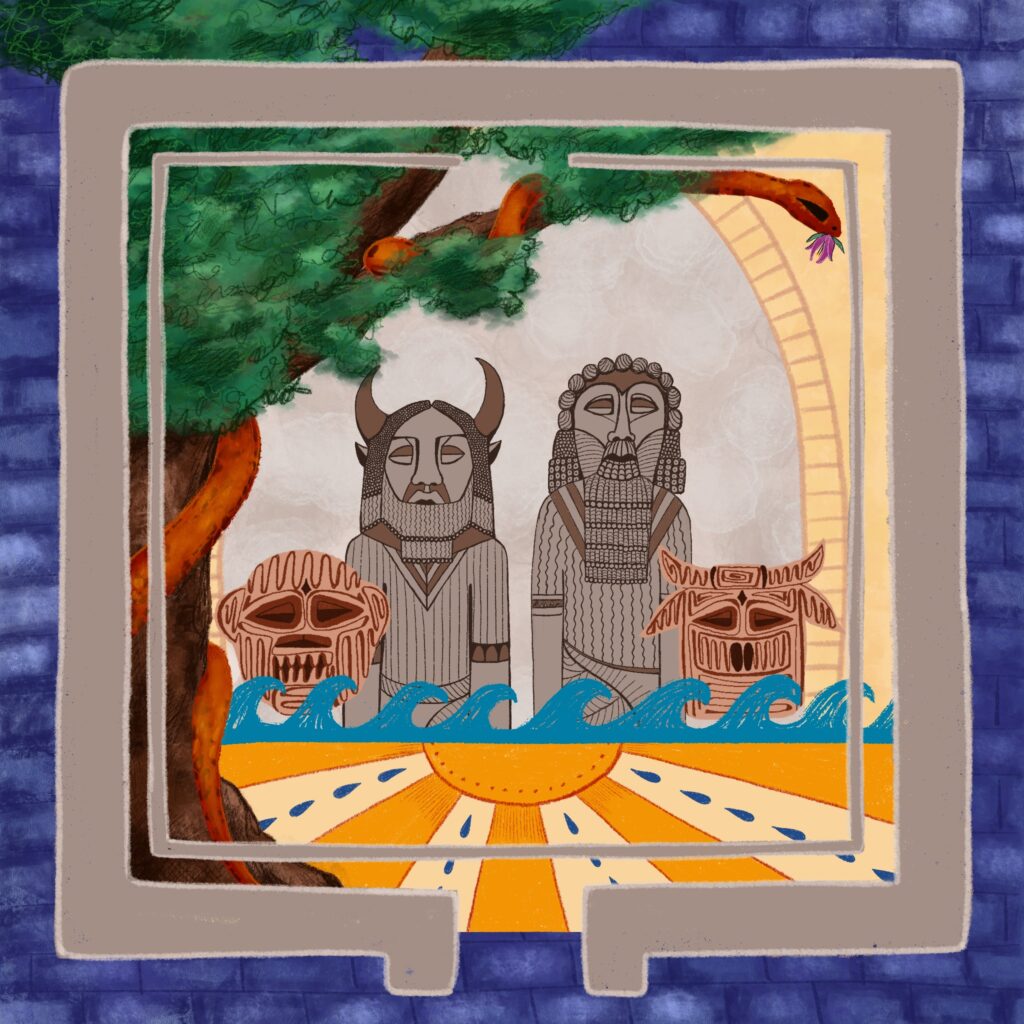Gilgamesh
by Anna Mullis
Copyright 2023 Anna Mullis

Symbolism:
The picture is framed by the walls of Uruk, symbolizing the beginning and end of the poem which describes their beautiful architecture.
Behind the walls of Uruk is the wall of Ishtar’s temple, built of lapis lazuli. This aspect represents Ishtar’s powerful role in the poem.
Placed in the center of the picture, Gilgamesh and Enkidu stand side by side.
Together, Gilgamesh and Enkidu faced multiple epic adventures. These included cutting down the cedar forest, which is represented in the cedar tree to the left, to kill the mighty Humbaba. Humbaba is placed to the left of Enkidu.
To the right of Gilgamesh is the Bull of Heaven which was sent down by Ishtar in vengeance. Below the Bull, the waves of The Flood appear.
Above Gilgamesh and Enkidu is an arch, symbolizing the doorway to another world that Enkidu passes through in death.
At Enkidu’s death, Gilgamesh faces severe sorrow. His grief is portrayed in the teardrops falling from the setting sun at the bottom of the drawing.
The setting sun also symbolizes the inevitable end of life. When Gilgamesh is faced with this reality, he seeks the elixir of life. He finds it in a flower, but it is eaten up by a snake. The snake can be seen slithering up the cedar with the flower in its possession.
When Gilgamesh comes to peace with his fate, he journeys home to his kingdom. Thus, we end where we began, at the walls of Uruk.